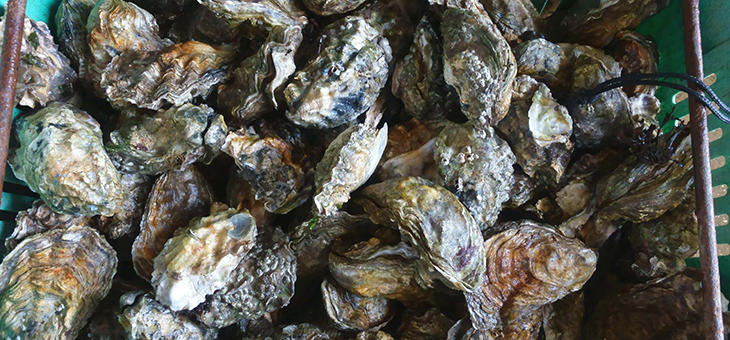Oysters are some of the most fascinating creatures in the natural world. They’re not only delicious to eat, but also play a huge role in coastal ecosystems.
If you want to be a connoisseur not just in taste, but in knowledge too, read on.
1. Oyster reefs are in danger
Oysters are free-floating creatures that attach themselves to rocks, piers and other hard surfaces, where they form vast reefs. These reefs help to create the right conditions for hundreds of other marine species to thrive, as they’re an important source of food, they naturally filter water and even act as storm protection.
Read more: Nine places that prove climate change is real
Wild oyster populations are in danger of becoming extinct though, with pollution, overfishing and climate change all having a devastating effect on numbers.
2. Oysters can change gender
All oysters start life as males and usually end up as females in their later years, as this helps them keep populations high. Their reproductive organs produce both sperm and eggs, and they can change gender several times over the course of their life.
3. Some people consider them vegan
Oysters and scallops are part of the bivalve family, so while they are living creatures, they don’t have a central nervous system. This means they don’t feel pain (although some argue research is lacking on this point).
Read more: Liven up vegetarian dinners with these meat replacements
Some vegans are happy to eat them, although others say that because oysters close their shells when under threat, they may have the ability to feel fear.
4. They have a three-chambered heart
Oysters have a three-chambered heart that pumps colourless blood around their fleshy form. Like fish, they also breathe through the use of gills. Wild oysters can live for a whopping 25 to 30 years, but many don’t survive that long.
5. An oyster can filter 190 litres of seawater a day
Oysters and other shellfish act as natural filters for the sea. They help remove excess nitrogen and other pollutants from the water by consuming them. In fact, adult oysters can reportedly filter up to 190 litres of seawater a day.
Read more: How much of a risk are microplastics?
6. Pearls don’t actually come from edible oysters
These days, the pearls used in jewellery are cultured (humans intervene and create the right conditions). When naturally occurring, pearls are created as a natural defence against an invading parasite or other threat, which could cause damage to the oyster’s body. But the species we tend to eat don’t operate in this way.
Did you know any of these interesting facts? Would you consider oysters vegan? Do you enjoy eating oysters? Have your say in the comments section below.
– With PA
If you enjoy our content, don’t keep it to yourself. Share our free eNews with your friends and encourage them to sign up.







